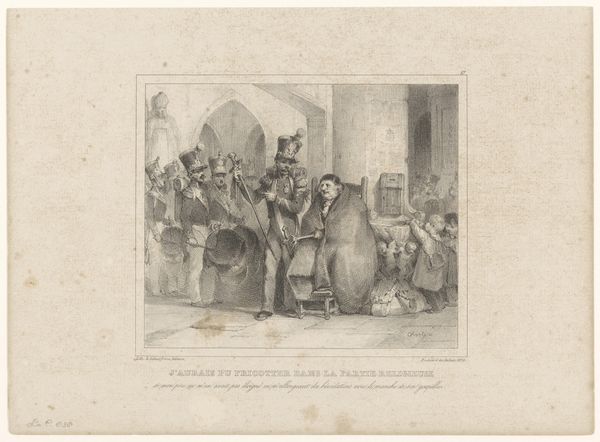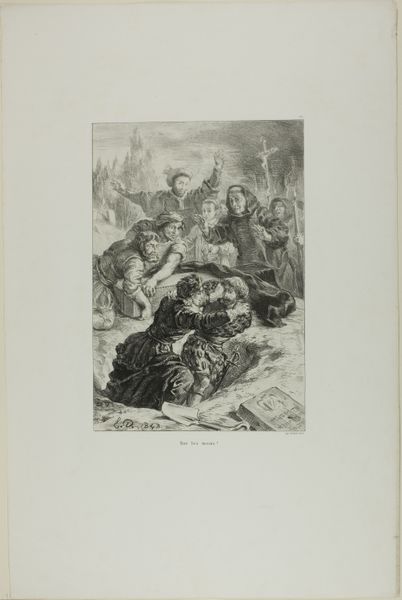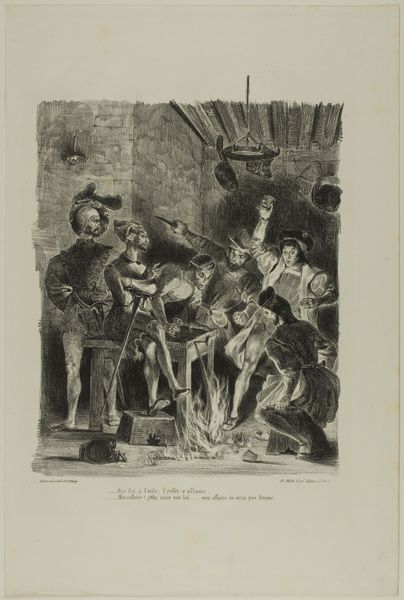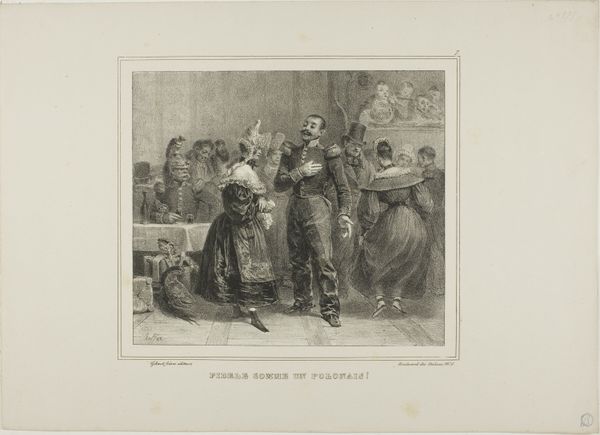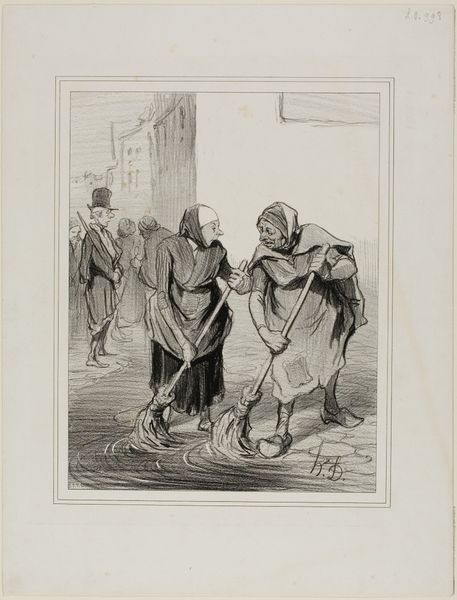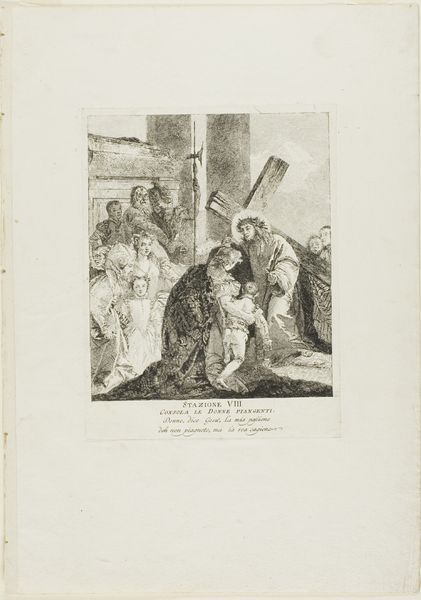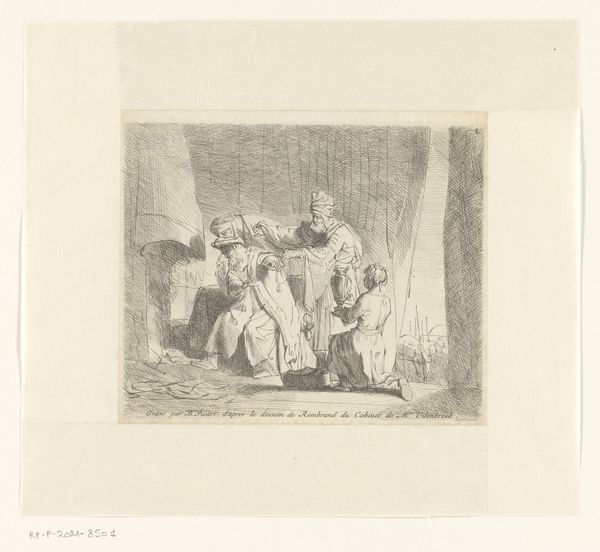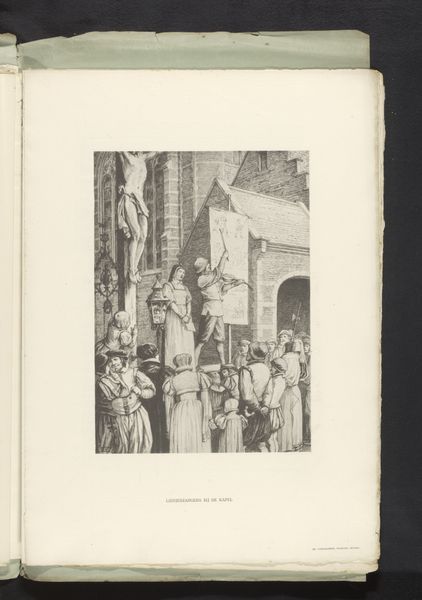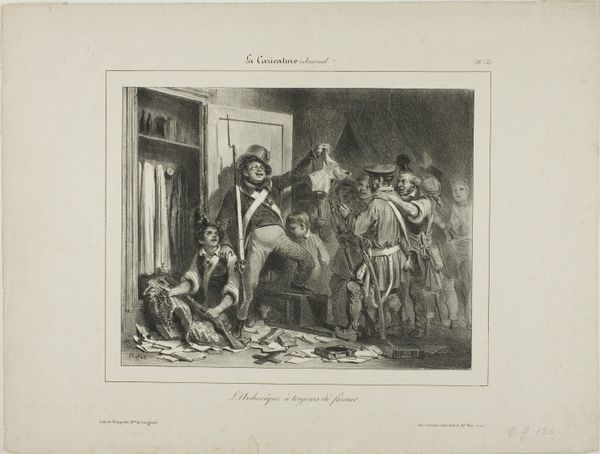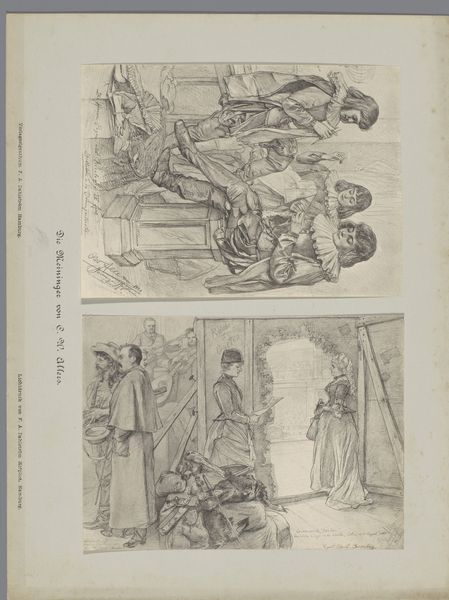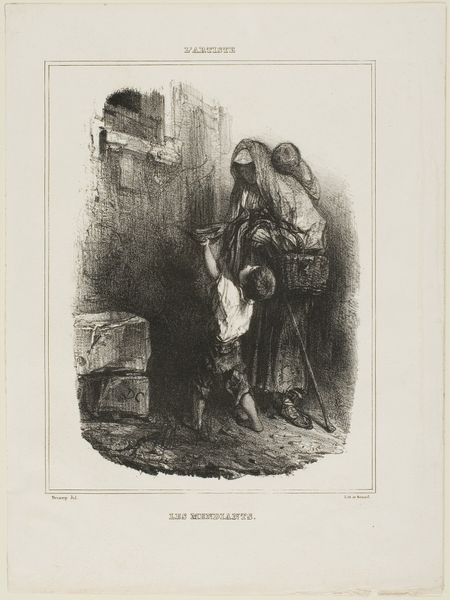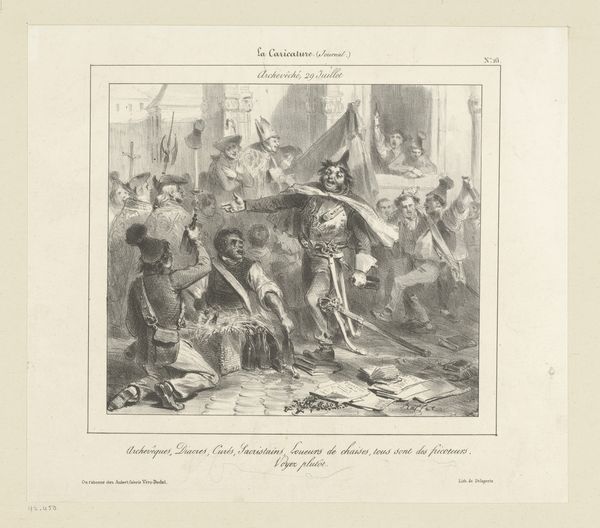
drawing, lithograph, print, paper
#
drawing
#
narrative-art
#
lithograph
# print
#
caricature
#
paper
#
romanticism
#
genre-painting
Dimensions: 223 × 190 mm (image); 360 × 276 mm (sheet)
Copyright: Public Domain
Editor: This is "Children these days are a bad lot!" created in 1827 by Auguste Raffet. It's a lithograph, a kind of print, on paper, and it strikes me as pretty satirical. What do you see in this piece? Art Historian: Well, looking at this from a historical perspective, what immediately grabs me is the social commentary. Raffet, in 1827, is capturing a specific sentiment – a classic complaint across generations. Do you think this concern with generational decline might reflect specific anxieties of the Restoration era in France? Editor: Possibly! I mean, the French Revolution was still pretty recent, right? So maybe the older generation was worried about the values being passed down. The children here are definitely rowdy – they are wielding swords, one’s holding an umbrella open... It's pretty chaotic. Art Historian: Exactly. Consider how printmaking, especially lithography, allowed for the widespread distribution of images like these. It becomes a tool for shaping public opinion, reinforcing or challenging social norms. Notice the figure in the background - an authoritative figure carved into the architecture looking on. Editor: I see that figure! It contrasts so strongly with the disarray in the foreground. And now that I think about it, maybe Raffet isn't just reflecting social anxieties, but perhaps exaggerating them for comic effect. Was Raffet trying to promote change, or reinforce traditional ideas of childhood behaviour? Art Historian: That's a crucial question. Raffet is tapping into anxieties of the era. The availability of print like this created a wide distribution of his view. This could reinforce it in ways only he would truly know. It's likely more nuanced. Artists often negotiate complex relationships with the power structures of their time. What's your take away here? Editor: I've learned to think about how the artist's choices – the medium, the subject, the style – connect to broader social and political conversations happening at that time. This artwork isn’t just a snapshot, but a real opinion distributed among a specific public. Thanks! Art Historian: It’s fascinating how a single print can open up a window onto an entire era. Seeing art as cultural participation changes everything.
Comments
No comments
Be the first to comment and join the conversation on the ultimate creative platform.
